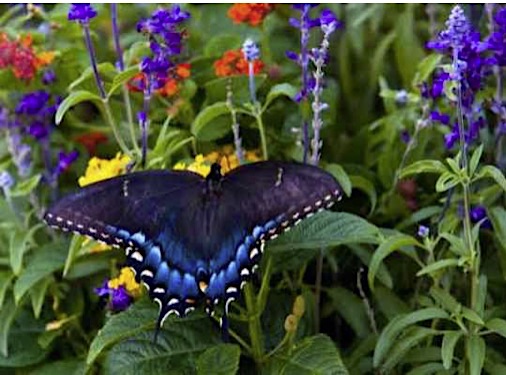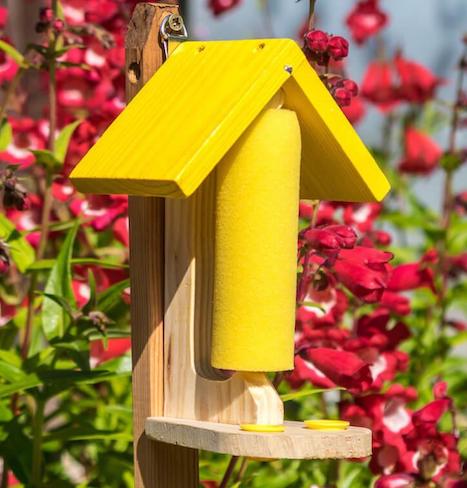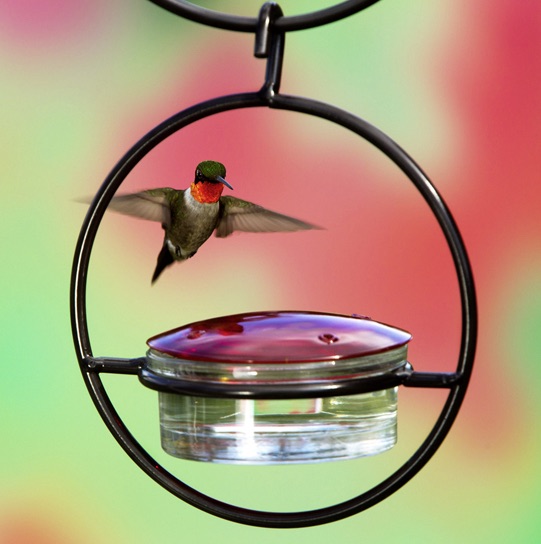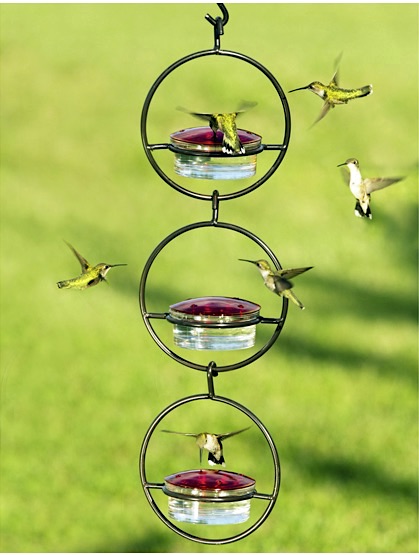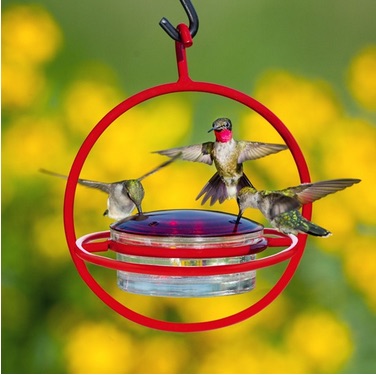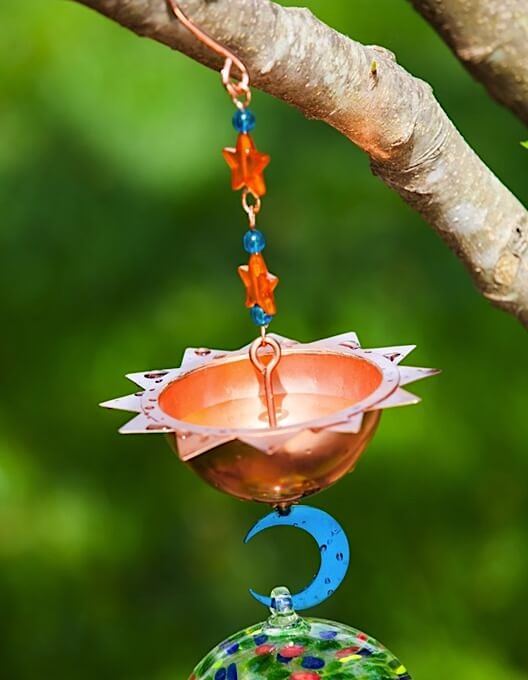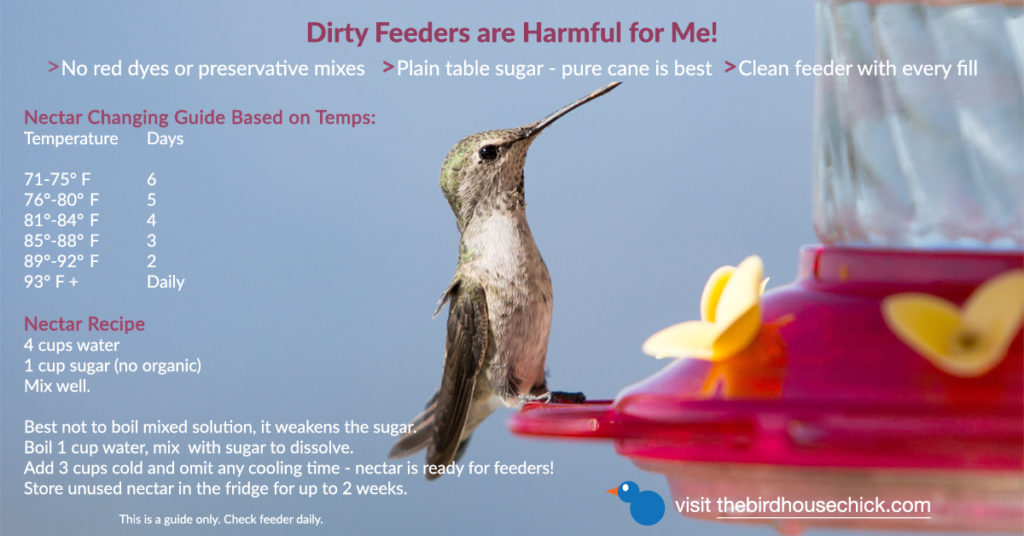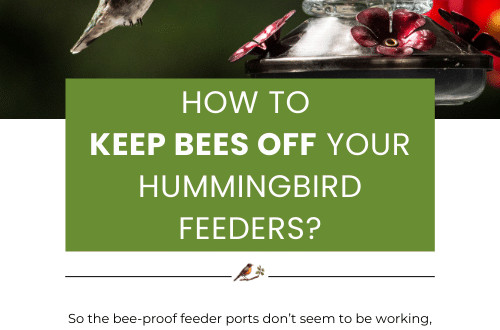-
Deter Unwanted Guests with Bird Seed Trays
Are rodents spoiling your bird feeding gig?
There’s a few easy ways to deter unwanted guests and get back to the most enjoyable hobby of feeding the birds!
Use Seed Trays: Adjustable bird seed trays aren’t just for hanging bird feeders, you can use them right on garden poles too. Depending on your set-up, there’s a seed tray that will work.
Recycled plastic and wooden birdseed trays (or seed catchers) feature tough metal screens that are easy to clean. These are perfect for 4×4 wood posts where the bird feeder is mounted on- or hanging from the top of post. The large platform areas also create additional feeding space for other birds who may not use the feeder itself, so it’s like getting an extra feeder for free.
Feed Clean: Because birds are like little kids, they tend to go for the good stuff- or rather the premium bits found in some seed mixes. Less expensive birdseed is really no bargain at all… when the seed is discarded and kicked out onto the ground, it becomes an open invite for pests!
Start with quality seed so there’s no waste left behind in the first place. No-Mess or No-Waste seed mixes may cost a little more but they do what their name implies. Sunflower hearts are also a great option for no-mess feeding because lots of different birds will partake. When high quality mixes are purchased in larger size bags, the cost is basically offset as to buying cheaper seed in small quantities. And everything is consumed by birds – not left on the ground for pests!
Use baffles: Keep pests (and squirrels) from climbing up to bird feeders. Some folks insist baffles don’t work- but they need to be installed correctly! You must be sure critters can’t jump sideways from something that allows them access to the feeder via super vault… a skill at which they’re quite capable!
Offer water: By far, the easiest and most effective way to attract birds! Fresh water is visited by birds who may not even use feeders, and especially during frigid weather- when natural water sources tend to freeze, it can be a life-saving element for your resident friendly fliers braving the elements.
Try one or a few of these options if you’ve given up on feeding feathered friends… you may be pleasantly surprised as the results should prove successful!
-
Add a Bee or Butterfly Feeder & Help Pollinators Thrive
“I am currently turning my weedy flower garden into a bird station with flowers for pollinators! (no more weeds!) I am very excited about my project and will have it completed by next Spring. So I am having fun perusing your website and procuring items to begin installation after Winter. For now, I’m preparing soil and tweaking my plans. Thanks for your wonderful shop! ” ~Nancy
The note above was recently sent in by a customer and friend… it’s simply music to our ears! Consider adding a bee or butterfly feeder to help all pollinators and to ease the great monarch migration in fall.
Fall plantings beyond your traditional mum varieties will extend your garden’s blooming season and even better yet, continue to attract butterflies! By choosing some of these beautiful, fall blooming plans in your garden, you’ll enjoy an abundance of blooms and continue to attract butterflies.
Even though we see a plethora of butterflies in spring and summer months surrounding our flowers, there are still many that have a need for nectar in the fall. Some varieties have migration paths as long as thousands of miles, so good nectar sources are needed along the way. Many butterflies are not migratory and continue searching for nourishment locally. Try your hand at some of these fall plantings for an additional bonus of butterflies to your garden!
Think red, yellow, pink, purple and other bright colors as you design your garden’s artistic palette of blooms for fall. Many flowers attract butterflies and are suitable for almost any garden. Consider plants that can withstand the season’s first or second frost. Some recommended plantings are:- Sedums: Easy to grow plants in gravelly soil in full sun with decent drainage.
Pink and Purple Asters: When sheared in the spring can produce a mound of pleasing, compact loads of daisy-like blooms - Salvia: Continue to bloom through the first hard frost come in many varieties and produce tubular blossoms to attract swallowtails, fritillaries, and other butterflies
- Latana: A favorite of butterflies that blooms in the summer until a hard, killing frost.
- Penta: A true love of the butterfly! Colors are typically bright red and work well in beds, borders, or in pots on a patio
Dark Night - Bluebears: Drought-tolerant for those of you living in dryer regions. Produces clusters of deep-blue flowers and typically grows 3 to 4 feet tall.
Remember, these are just a few varieties of fall bloomers to get you started! Consider fall planting choices for beauty-enhancing blooms and the additional benefit of nourishment for our butterfly friends!
- Sedums: Easy to grow plants in gravelly soil in full sun with decent drainage.
-
Try a Vertical Humming Bird Feeder for Busy Migration
It happened last year too, we skipped out on the blog from Mother’s Day until well after Father’s Day… hate when that happens, especially with all the happenings and splendor of spring backyard birding.
We hope you’ve been blessed with many successful broods, maybe you’ve seen a monarch or two, bluebirds fledge, and that your hummingbirds returned from last year to bless your garden for the season! If this is your first stab at the addictive hobby, we hope you found lots of joyous moments and wonder with new avian visitors and that you’ll continue enticing new feathered friends with food, water and shelter.
Now that summer is waning and daylight hours are fewer, hummingbirds are preparing for migration. It has nothing to do with temperatures and it’s a total myth that leaving feeders up will prevent them from going. So leave at least one feeder up for stragglers!
Their long journey south requires extra fuel, so they’re fattening up and absolutely owning their favorite humming bird feeders! If you think the sprites were a tad territorial before… just watch- it’s magnified ten times now! The show is mesmerizing as crowds gather and vie for a feeder to call their own. Have one of those hummingbird swings that was never really used much? Watch! Just watch the little guys fight over that too!
These cool humming bird feeders have a great feature for expansion or vertical linking without extra hooks or hardware to get lost. Recycled glass in a top-fill, no leak design just rocks!
They’re easy to clean and less likely to mold as plastic does. The coolest thing? Remove the lids for winter and you’ve got a great multi-use bird feeder for resident friends; use suet, peanuts, meal worms, nuggets, jelly or fruit.
The same feeder/idea comes stepped-up a notch in vivid red with circular perch. We think (but can’t promise) hummingbirds prefer to perch while eating as it conserves energy. Put 2 or 3 of these glass hummingbird feeders together and use them year-round for chickadees, nuthatches, wrens, bluebirds and other usual suspects!
And should ants ever become a problem… don’t forget the moat! The best investment ever for feeding hummingbirds- or orioles- or butterflies! Any time there’s sweet, sticky nectar, fruit or jelly, you can easily keep pesky ants at bay with plain water inside the moat. The birds will thank you!
Safe travels little ones… hope to see you back again next year!
For next season, here’s the simple nectar recipe and helpful guide for keeping nectar fresh. Cloudy nectar is always a sure sign the solution needs to be changed!


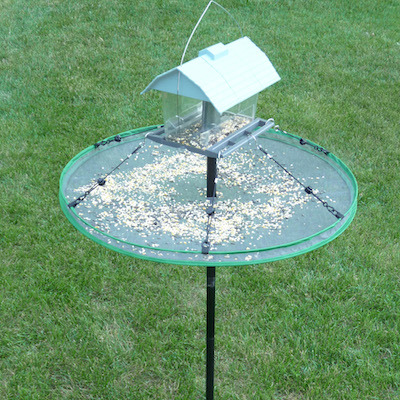
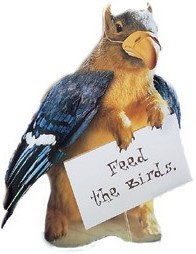 Try one or a few of these options if you’ve given up on feeding feathered friends… you may be pleasantly surprised as the results should prove successful!
Try one or a few of these options if you’ve given up on feeding feathered friends… you may be pleasantly surprised as the results should prove successful!